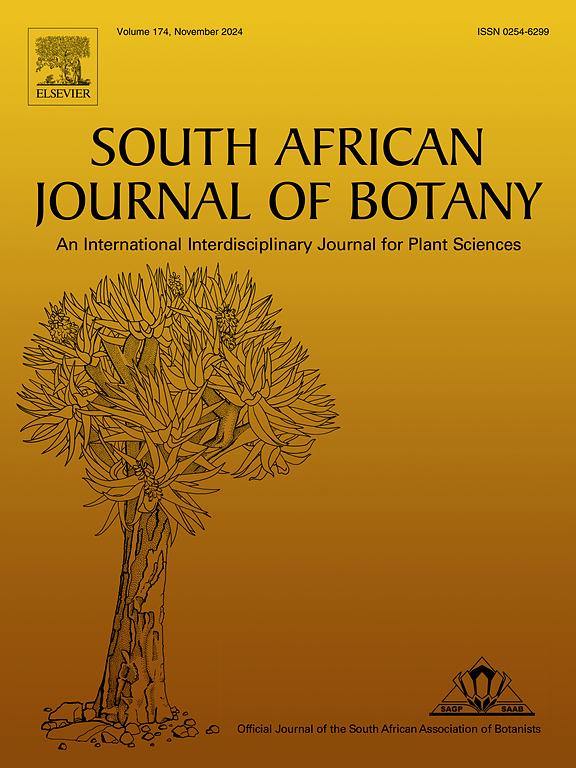Regulatory mechanism of the fine root morphology of Clematis fruticosa in response to arbuscular mycorrhizal fungi inoculation and nitrogen addition
IF 2.7
3区 生物学
Q2 PLANT SCIENCES
引用次数: 0
Abstract
How do arbuscular mycorrhizal fungi (AMF) regulate the adaptation mechanism of plant roots at different levels of nitrogen (N) deposition under global climate change? Our study explored the relationships among root morphology construction, gene expression and hormone synthesis regulation of the plant under N addition and AMF inoculation treatments. One-year-old potted Clematis fruticosa was selected as the study object, and inoculation (including inoculation without and with AMF) treatments and N addition (including control, low N, medium N and high N with N application amounts of 0, 3, 6 and 9 g·m−2·a−1, respectively) treatments were set up. The regulatory mechanism of differential gene expression and phytohormone metabolism on fine root morphology was analyzed under the inoculation and N addition treatments. In all of the N addition treatments, the total root length, root surface area and total volume of seedlings inoculated with AMF were significantly increased in the control treatment compared with those not inoculated. AMF inoculation and N addition significantly affected the differential gene expression of fine roots, while the no-inoculation treatment had a lesser effect. Four phytohormones (jasmonic acid, abscisic acid, gibberellin A1 and gibberellin A7) and 43 genes related to hormone synthesis were identified by PLS-PM pathway analysis, and phytohormones had the greatest effect on fine root morphology. The contents of jasmonic acid and abscisic acid decreased based on the expression of related genes (LOX, AOC, OPR, and NCED) that were down-regulated after AMF inoculation, which promoted root growth. The fine root morphology of C. fruticosa was directly regulated by AMF inoculation, gene expression and phytohormone content. The regulatory mechanisms of phytohormones in the AMF inoculation and N addition treatments showed antagonistic effects. Gene expression positively regulated root morphology, while phytohormones had a negative regulatory effect. Results could provide a reference for understanding the regulatory mechanism with mycorrhizal fungi on plant ecological resilience under N input conditions.
求助全文
约1分钟内获得全文
求助全文
来源期刊

South African Journal of Botany
生物-植物科学
CiteScore
5.20
自引率
9.70%
发文量
709
审稿时长
61 days
期刊介绍:
The South African Journal of Botany publishes original papers that deal with the classification, biodiversity, morphology, physiology, molecular biology, ecology, biotechnology, ethnobotany and other botanically related aspects of species that are of importance to southern Africa. Manuscripts dealing with significant new findings on other species of the world and general botanical principles will also be considered and are encouraged.
 求助内容:
求助内容: 应助结果提醒方式:
应助结果提醒方式:


